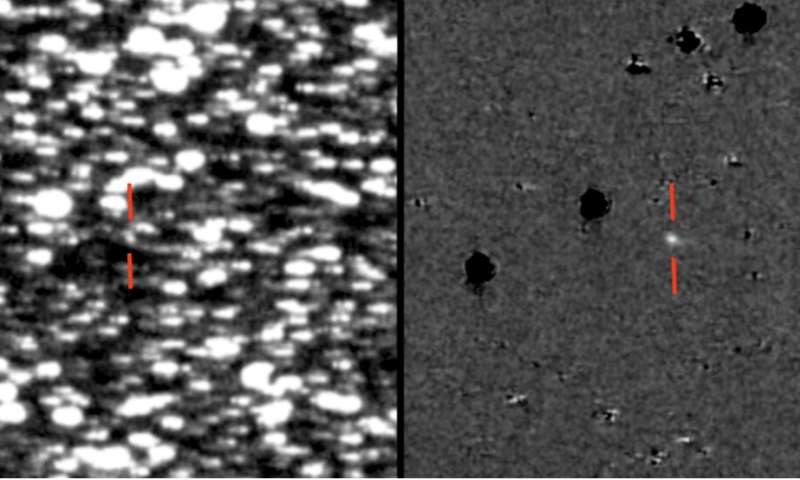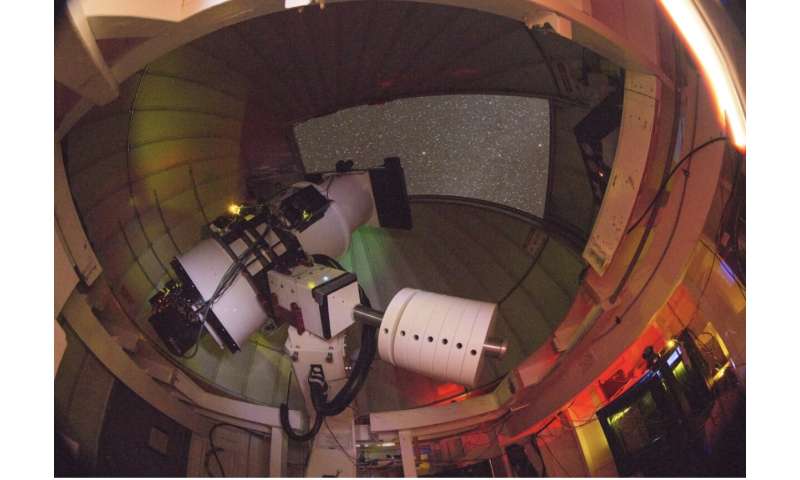Astronomers recategorize asteroid-like comet
by Science X staff
Recently discovered object 2019 LD2, originally believed to be the first cometary "Jupiter Trojan" asteroid by astronomers at the University of Hawaiʻi at Mānoa Institute for Astronomy turns out to be an interloper comet masquerading as a member of the Trojan population. The distinction was first suggested by amateur astronomers Sam Deen and Tony Dunn on the Minor Planet Mailing List on May 21 and confirmed by UH's Asteroid Terrestrial-impact Last Alert System (ATLAS) colleagues Alan Fitzsimmons and Henry Hsieh that 2019 LD2 is in fact a comet with a chaotically changing orbit currently resembling that of a Trojan asteroid. The cometary nature of this object was announced in a Minor Planet Electronic Circular on May 22, giving it the slightly different new name of P/2019 LD2 that denotes it as a comet. On May 23, additional analysis by Japan astronomer Syuichi Nanako confirmed the evolving orbit was published by the Central Bureau of Astronomical Telegrams.
True Jupiter Trojan asteroids have orbits that closely follow Jupiter's orbit around the Sun but are "clumped" ahead and behind Jupiter. These asteroids are essentially locked into clumps because they are in a delicate permanent gravitational balance between Jupiter and the Sun. Comet P/2019 LD2 turns out to be a Jupiter-family comet, a different population of objects also under the influence of Jupiter, with typical comet-like orbits that can extend from the outer solar system beyond Saturn all the way to the inner solar system.
Comet P/2019 LD2 regularly comes close enough to Jupiter every few decades so the pushes and pulls from close gravitational interactions with Jupiter can change the comet's orbit dramatically. In the case of P/2019 LD2, its location and orbit currently approximates the position and near-circular orbit of Jupiter Trojan asteroids. The current orbit is not stable, meaning Jupiter will alter it again in the coming decades and comet P/2019 LD2 will no longer be easily confused with a Jupiter Trojan asteroid.

Provided by University of Hawaii at Manoa